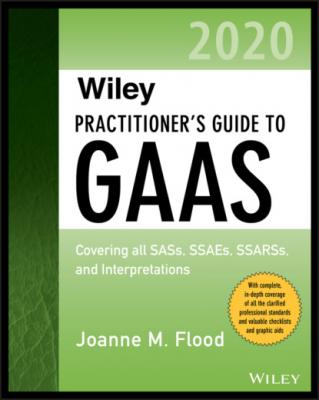|
The responsibilities of the auditor
|
We will conduct our audit in accordance with auditing standards generally accepted in the United States of America (GAAS). Those standards require that we plan and perform the audit to obtain reasonable assurance about whether the financial statements are free from material misstatement. An audit involves performing procedures to obtain audit evidence about the amounts and disclosures in the financial statements. The procedures selected depend on the auditor’s judgment, including the assessment of the risks of material misstatement of the financial statements, whether due to fraud or to error. An audit also includes evaluating the appropriateness of accounting policies used and the reasonableness of significant accounting estimates made by management, as well as evaluating the overall presentation of the financial statements.
Because of the inherent limitations of an audit, together with the inherent limitations of internal control, an unavoidable risk exists that some material misstatements may not be detected, even though the audit is properly planned and performed in accordance with GAAS.
In making our risk assessments, we consider internal control relevant to the entity’s preparation and fair presentation of the financial statements in order to design audit procedures that are appropriate in the circumstances but not for the purpose of expressing an opinion on the effectiveness of the entity’s internal control. However, we will communicate to you in writing concerning any significant deficiencies or material weaknesses in internal control relevant to the audit of the financial statements that we have identified during the audit.
|
|
The responsibilities of management and identification of the applicable financial reporting framework
|
Our audit will be conducted on the basis that [management and, when appropriate, those charged with governance] acknowledge and understand that they have responsibility:For the preparation and fair presentation of the financial statements in accordance with accounting principles generally accepted in the United States of America;For the design, implementation, and maintenance of internal control relevant to the preparation and fair presentation of financial statements that are free from material misstatement, whether due to fraud or to error; andTo provide us with:Access to all information of which [management] is aware that is relevant to the preparation and fair presentation of the financial statements such as records, documentation, and other matters;Additional information that we may request from [management] for the purpose of the audit; andUnrestricted access to persons within the entity from whom we determine it necessary to obtain audit evidence.
As part of our audit process, we will request from [management and, when appropriate, those charged with governance] written confirmation concerning representations made to us in connection with the audit.
|
|
Other relevant information:
|
|
|
Insert other information, such as fee arrangements, billings, and other specific terms, as appropriate.
|
|
|
Reporting
|
[Insert appropriate reference to the expected form and content of the auditor’s report. Example follows:]
We will issue a written report upon completion of our audit of Plainsmen, Inc.’s financial statements. Our report will be addressed to the board of directors of Plainsmen, Inc. We cannot provide assurance that an unmodified opinion will be expressed. Circumstances may arise in which it is necessary for us to modify our opinion, add an emphasis-of-matter or other-matter paragraph(s), or withdraw from the engagement.
We also will issue a written report on [insert appropriate reference to other auditors’ reports expected to be issued] upon completion of our audit.
|
|
Signed
Name and Title
Date
|
Please sign and return the attached copy of this letter to indicate your acknowledgment of, and agreement with, the arrangements for our audit of the financial statements including our respective responsibilities.
Smith and Jones.
Acknowledged and agreed on behalf of Plainsmen, Inc. by
_____________________________
|
Notes
1 1 Acceptable reporting frameworks contain established accounting principles promulgated by a body designated by the Council of the AICPA under Rule 203 in the AICPA Code of Professional Conduct. These bodies include FASB, FASAB, IFRS, GASB, AICPA, and PCAOB.
2 2 In this chapter, references to management should be read as “management and, when appropriate, those charged with governance,” unless the context suggests otherwise. Those charged with governance are those “with responsibility for overseeing the strategic direction of the entity and obligations related to the accountability of the entity,” including the financial reporting process. (AU-C Glossary of Terms)
